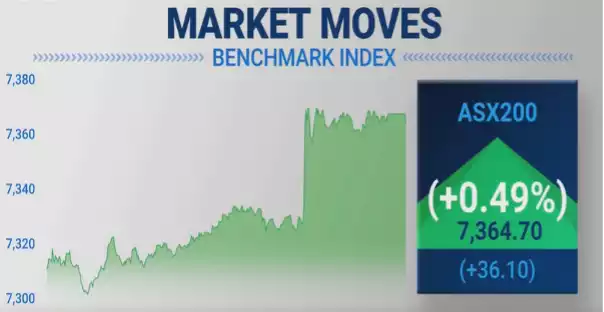RBA hikes rates again, but hints at relief around the corner
News
|
Posted 08/03/2023
|
10684
On Tuesday the RBA declared a 10th successive interest rate hike for the Australian economy, but a language change in their announcement left analysts more optimistic for the future.
Though the rate rise itself was in line with market expectations, the language that the RBA used was significantly less hawkish than what previously used in RBA meetings.

The acknowledgment of an expected decline in inflation, coupled with slower growth and aggregate demand, is vastly different than the all-encompassing stop inflation at all costs rhetoric we have seen in the past.
It hints at a change in sentiment, and a possible change in policy too.
As a consequence, the Australian share market finished the day up 0.49%, with rate sensitive stocks in particular (such as those in the retail industry that rely on consumer’s disposable income) ending the day strong, including Myer which closed up 9%.

Additionally, RBA Governor Philip Lowe also touched on the significant pain these rate rises have placed on Australian home owners.
“Some households have substantial savings buffers, but others are experiencing a painful squeeze on their budgets due to higher interest ratees and the increase in the cost of living.”
For example, since April 2021, the 10 consecutive rate rises would have culminated to a $1080 increase in monthly interest rate payments on a $600,000 mortgage.
Furthermore, a lower disposable income has forced many to resort to food charities, whose demand has increased 50% since Christmas, 20% of which are first time users.
Lowe went on to discuss how the RBA will be closely watching the global economy’s response to the current interest rate environment.
“Household balance sheets are also being affected by the decline in housing prices. Another source of uncertainty is how the global economy responds to the large and rapid increase in interest rates around the world.”
“In assessing when and how much further interest rates need to increase, the Board will be paying close attention to developments in the global economy, trends in household spending and the outlook for the inflation and labour market.”
In wake of the language change, Eleanor Creagh, senior economist at property data firm PropTrack, also believes the RBA is nearing the end of its peak rate cycle.
“We’re closer to the peak in interest rate tightening than not and if the Reserve Bank hits pause on its tightening cycle later this year, home prices will likely begin to stabilize as some of the uncertainty buyers have experienced with respect to borrowing capacities and mortgage servicing costs reduces.”
In stark contrast last night the Fed chair came out very hawkish, hinting at an increase in pace of hikes! That saw the USD spike, pushing the already softer AUD even lower, around 65.88 at the time of writing. That lower AUD saw Aussie gold higher despite the US spot price coming off in the face of USD strength. Against a more dovish RBA, that just adds weight to even more pain for the AUD going forward.
Submit your question to [email protected] and SUBSCRIBE to the YouTube Channel to be notified when the GSS Insights video is live.
*********************************************************************************